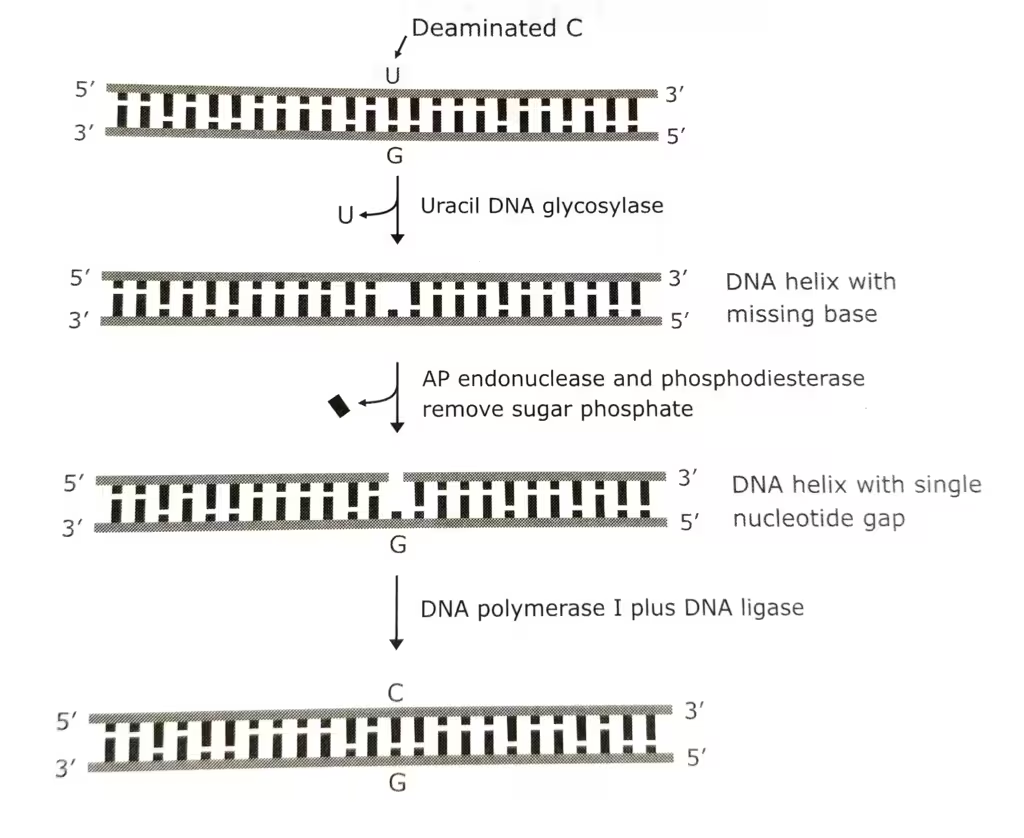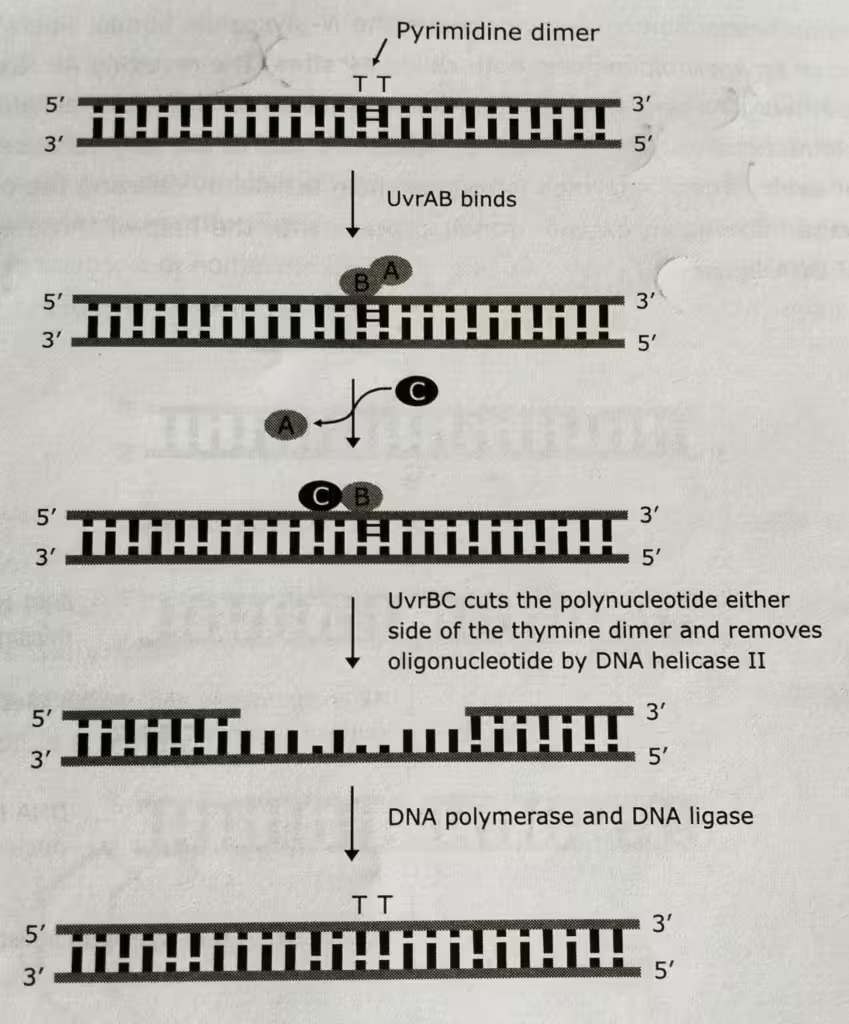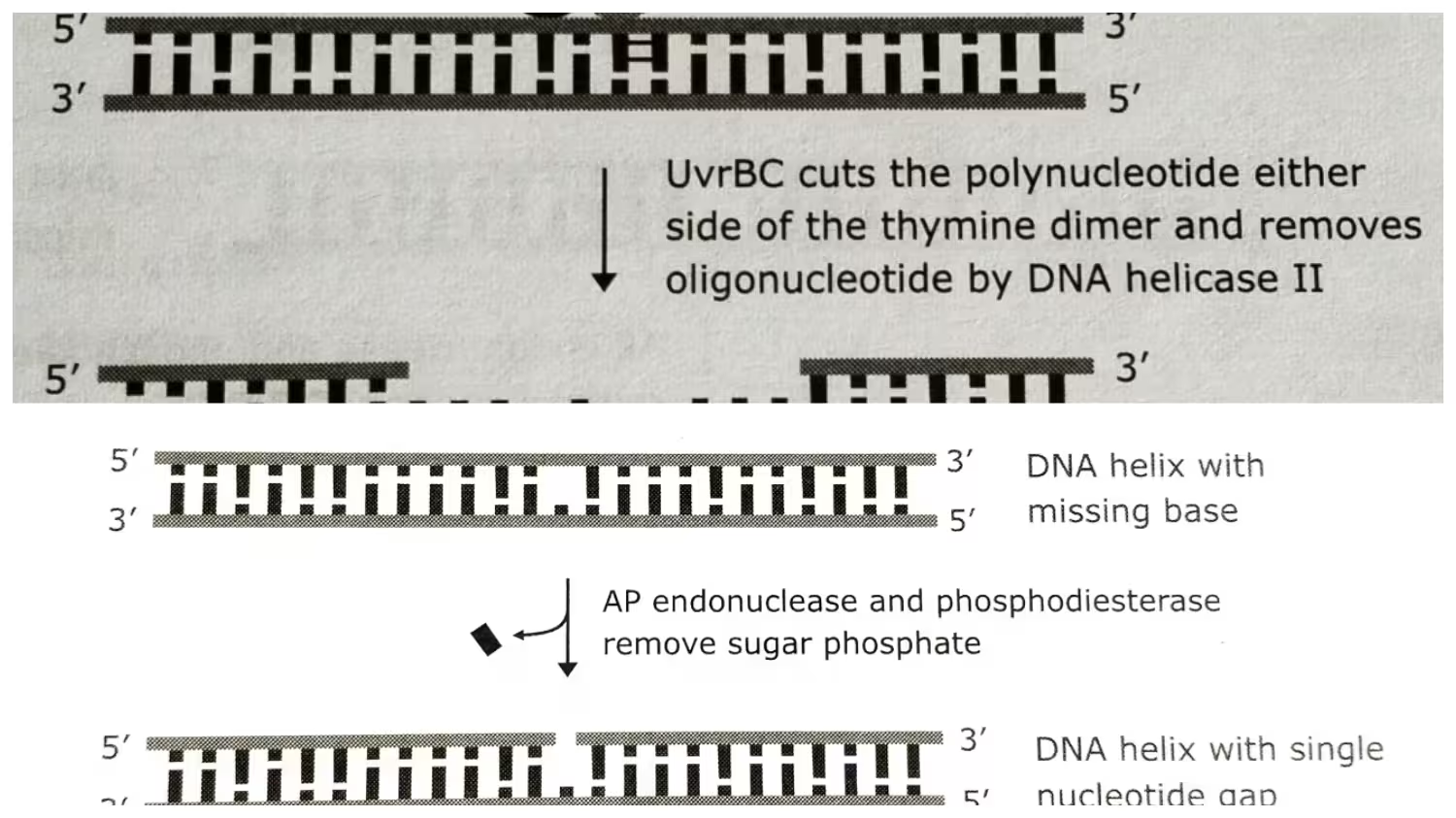Table of Contents
Base excision repair vs Nucleotide excision repair is presented step by step. These two repair mechanisms are the major pathways of DNA repair.
Base excision repair involves three consecutive steps. Those are-a) the removal of a damaged nucleotide base, b) the excision of a short length of the polynucleotide, and lastly, the resynthesis of the DNA with a DNA polymerase. Nucleotide excision repair is similar to base excision repair, but does not lead to the removal of a damaged base and can work on more substantially damaged areas of DNA.
The objective – Base Excision repair vs Nucleotide excision repair:
Base excision repair is used to repair minor damage like alkylation and deamination resulting from exposure to mutagenic agents.
Nucleotide excision repair is used to remove the bulky DNA lesions that are generated by ultraviolet (UV) rays, environmental mutagens, or cancer chemotherapeutic treatments.
Brief description- Base Excision repair vs Nucleotide excision repair :
The base excision repair mechanism includes the removal of mangled nucleotide bases, excision of a short length of the polynucleotide, and regeneration of DNA strands with a DNA polymerase.
The nucleotide excision repair system includes the breaking of a phosphodiester bond on either side of the lesion, on the same strand, leading to the excision of an oligonucleotide. This excision leaves a gap that is filled by repair synthesis, and a ligase seals the breaks.
The involved enzymes- Base Excision repair vs Nucleotide excision repair :
| The repair mechanisms | The enzyme involved |
|---|---|
| Base excision repair | DNA glycosylase, AP endonuclease |
| Nucleotide excision repair | ABC excinuclease (the uvr system) |
Base excision repair vs Nucleotide excision repair- Role of DNA glycosylase, AP endonuclease, the uvr system (ABC excinuclease):
The DNA glycosylase in the base excision repair system does not cleave phosphodiester bonds. Instead of this, it forms an apurinic or an apyrimidinic site (AP site).
The resulting AP site is then repaired by the AP endonuclease in the Base excision repair system.
The UVR system (ABC excinuclease) of nucleotide excision repair in E. coli is the best-studied example. It involves the removal of relatively short, usually 12 nucleotides in length.
The main mechanism: Base excision repair vs Nucleotide excision repair:
The main mechanism: Base excision repair system:
- Enzyme DNA glycosylase initiates the repair process.
- The DNA glycosylase does not cleave phosphodiester bonds. Instead of this, it cleaves the N-glycosidic bonds, releasing the altered base.
- As a result, an apurinic or an apyrimidinic site is generated, both AP sites.
- The resulting AP site is then repaired by an AP endonuclease repair pathway.
- All cells have endonucleases that attack the sites left after the spontaneous loss of single purine or pyrimidine residues.
- The AP endonucleases are vital to the cell, because spontaneous depurination is a relatively frequent event.
- These enzymes introduce chain breaks by cleaving the phosphodiester bonds at AP sites.
- This bond cleavage initiates an excision-repair process with the help of three enzymes- an exonuclease, DNA polymerase I, and DNA ligase.
The main mechanism: Nucleotide excision repair system:
- The key enzyme is made up of three subunits, products of the uvrA, uvrB, and uvrC genes, and is called the ABC excinuclease (Excinuclease= excision endonuclease).
- ABC excinuclease binds to the DNA at the site of a lesion.
- First uvrA and uvrB attach to the DNA at the damaged site.
- UvrA recognizes the damage.
- The departure of uvrA allows uvrC to bind, forming uvrBC dimer which cleaves the damaged strand at the eighth phosphodiester bond on the 5′ side of the lesion and at the fourth or fifth phosphodiester bond on the 3′ side.
- UvrD is a helicase (also called helicase II) that helps to unwind the DNA to allow the release of the single strand between the two cuts. The resulting gap is filled in by DNA polymerase I and sealed by ligase.
The schematic representation- Base excision repair vs Nucleotide excision repair:


Other related notes:
- Base excision repair: https://thebiologyislove.com/base-excision-repair/
- Nucleotide excision repair: https://thebiologyislove.com/nucleotide-excision-repair/
Facebook link: https://www.facebook.com/share/p/2iST2F5nwefKHJmq/?mibextid=oFDknk

